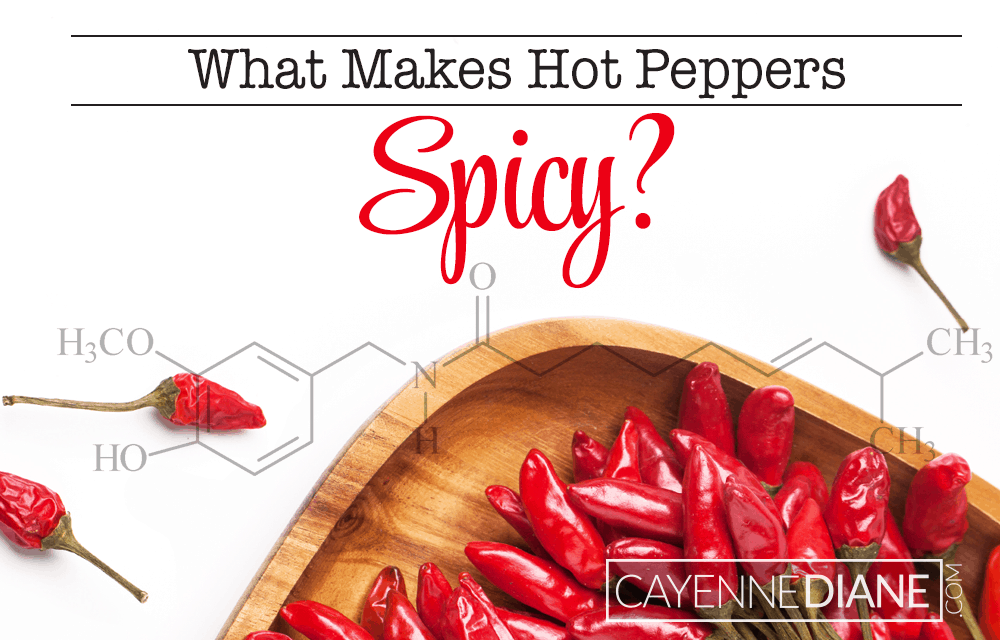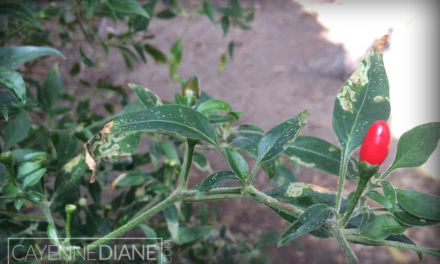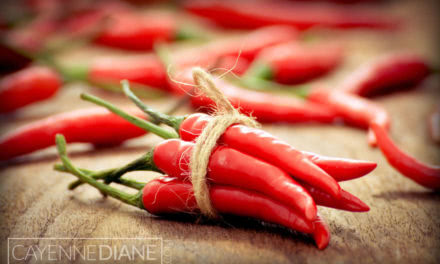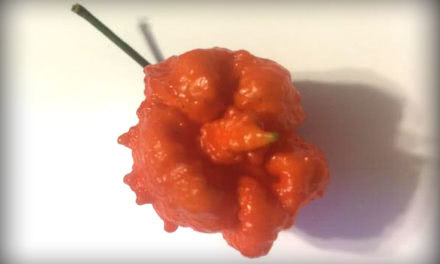Capsaicin, pronounced “cap-SAY-sin”, is the chemical compound that gives hot chile peppers the heat you experience when eating them. It is present in almost all peppers, and varies from nearly undetectible, to “Super Hot” ratings.
Capsaicin can be thought of as an evolutionary deterrent to keep hungry animals from eating the precious seeds that will plant and grow the next generation of each pepper. Therefore, the pith of the pepper is where capsaicin is most concentrated. In biological terms, the pith is the placental tissue, where the seeds of the plant grow.
Helpful hint: Removing the pith reduces the heat of a pepper in a recipe while preserving the unique flavor it will contribute.
HOW DOES CAPSAICIN CREATE THAT BURNING PAIN?
It’s all about sending signals through your nervous system. When you accidentally touch a hot stove, messages are sent to your brain to signal “DANGER! THIS IS BAD NEWS AND WILL REALLY HURT YOU!”
What’s at work here is a receptor in your nervous system that goes by the clever name of TRPV1. It is involved in the transmission of pain. Chief among the duties of TRPV1 is regulating body temperature. This makes it perfect for sensing the pain from heat.
Capsaicin is a specialized combination of molecules that really knows how to aggravate TRPV1. It binds to the receptor and imitates what TRPV1 normally interprets as high temperatures. It is tuned to sense a temperature of 43°C/109°F and above. As the perceived temperature rises, the feeling of burning kicks in. Foods such as mustard, horseradish, and wasabi provide a similar feeling but with a different chemical compound. Usually felt more in the sinuses, allyl isothiocyanate does the dirty work here.
Can you train TRPV1 to become more tolerant of spicy foods? Find out here!
WHY AREN’T BIRDS AFFECTED BY CAPSAICIN?
This goes back to the evolutionary component of capsaicin. Birds are notorious for spreading the seeds of various plants far and wide. Peppers are no exception. Birds have TRPV1 receptors, but unlike mammals, these receptors are not activated by capsaicin. Birds can eat chile peppers and enjoy the nutritious treat, but they won’t feel the burn. Furthermore, the chile seeds that pass through the bird are better able to produce new plants than if going through the same process in a mammal—that’s you!
HOW TO MEASURE CAPSAICIN
Capsaicin concentration is measured in Scoville Heat Units (SHU). The Scoville Scale was created in 1912 by American pharmicist Wilbur Scoville. Back then, the original method was imprecise due to the use of human testers. Today, tests are conducted using high performance liquid chromotagraphy (HPLC). This provides a level of accuracy that determines how much capsaicin is present in a chile pepper.
Getting your own Scoville test is also possible. Find out more here.






